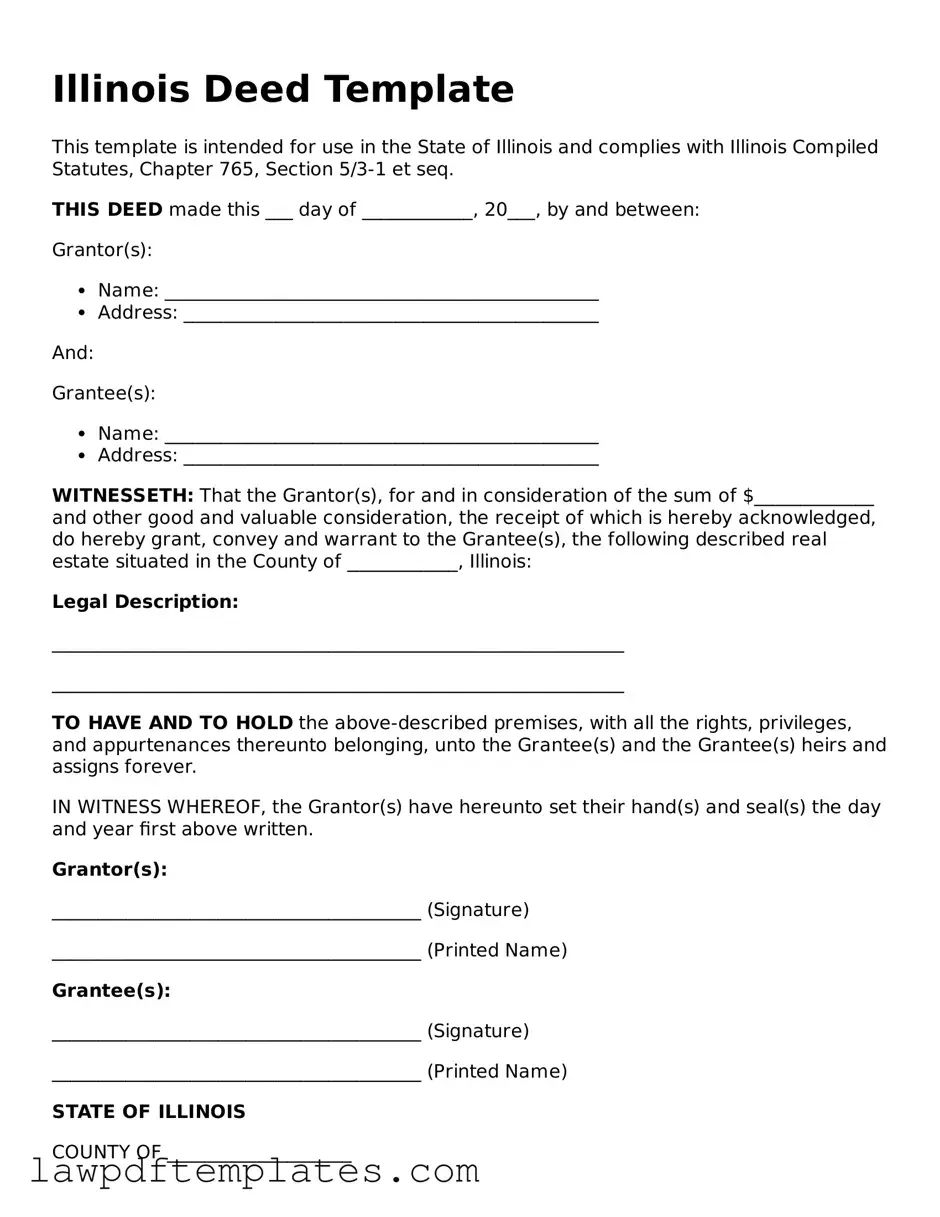Illinois Deed Template
This template is intended for use in the State of Illinois and complies with Illinois Compiled Statutes, Chapter 765, Section 5/3-1 et seq.
THIS DEED made this ___ day of ____________, 20___, by and between:
Grantor(s):
- Name: _______________________________________________
- Address: _____________________________________________
And:
Grantee(s):
- Name: _______________________________________________
- Address: _____________________________________________
WITNESSETH: That the Grantor(s), for and in consideration of the sum of $_____________ and other good and valuable consideration, the receipt of which is hereby acknowledged, do hereby grant, convey and warrant to the Grantee(s), the following described real estate situated in the County of ____________, Illinois:
Legal Description:
______________________________________________________________
______________________________________________________________
TO HAVE AND TO HOLD the above-described premises, with all the rights, privileges, and appurtenances thereunto belonging, unto the Grantee(s) and the Grantee(s) heirs and assigns forever.
IN WITNESS WHEREOF, the Grantor(s) have hereunto set their hand(s) and seal(s) the day and year first above written.
Grantor(s):
________________________________________ (Signature)
________________________________________ (Printed Name)
Grantee(s):
________________________________________ (Signature)
________________________________________ (Printed Name)
STATE OF ILLINOIS
COUNTY OF ____________________
Subscribed and sworn to before me this ___ day of ____________, 20___.
________________________________________ (Notary Public)
My commission expires: __________________
